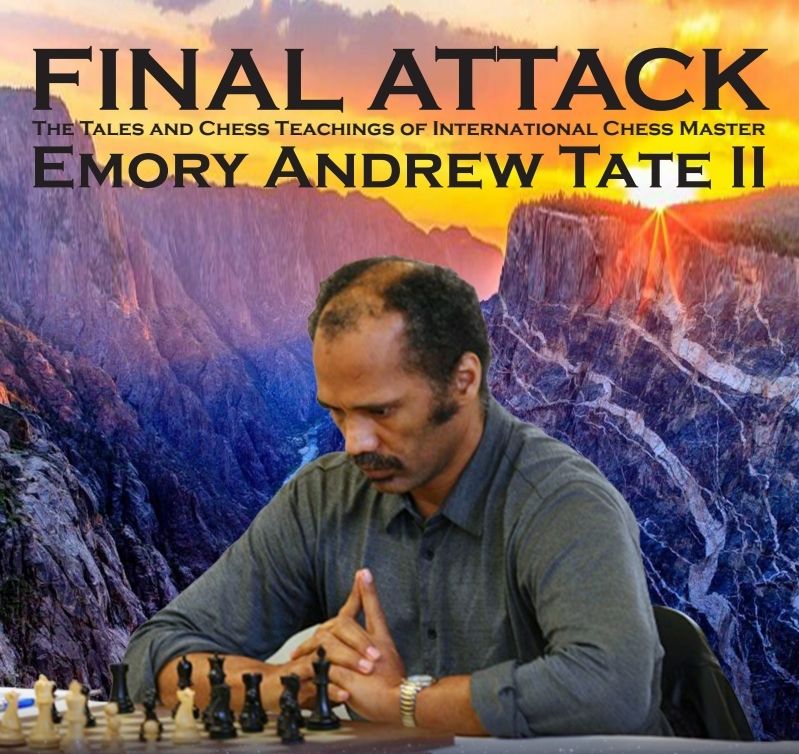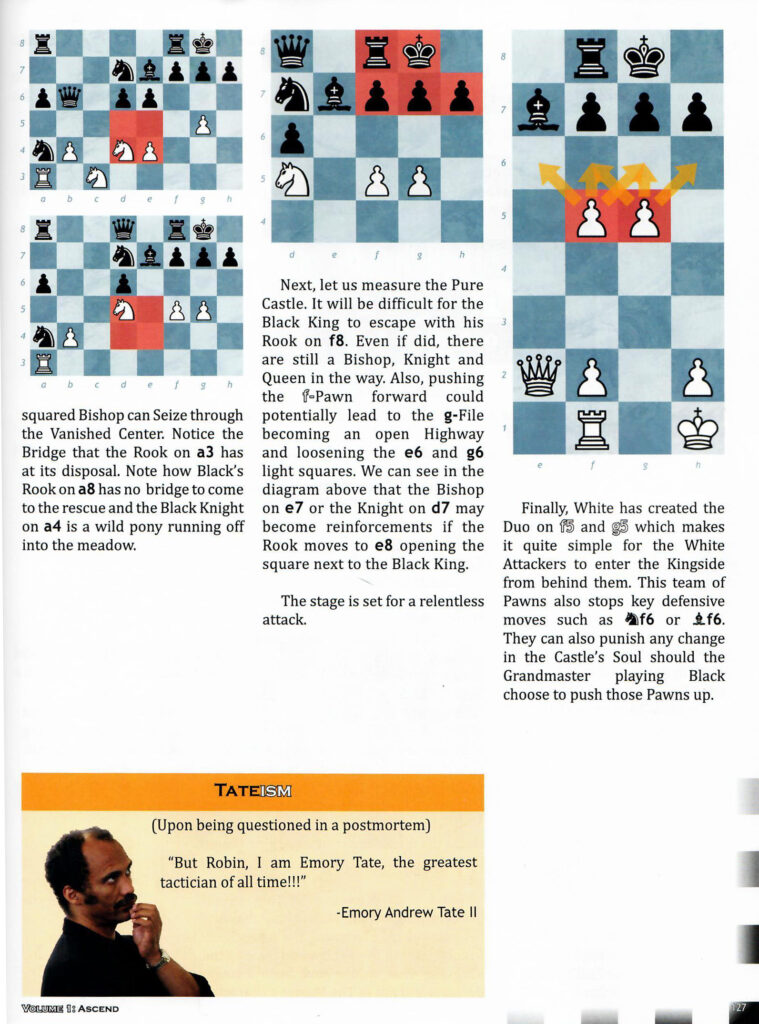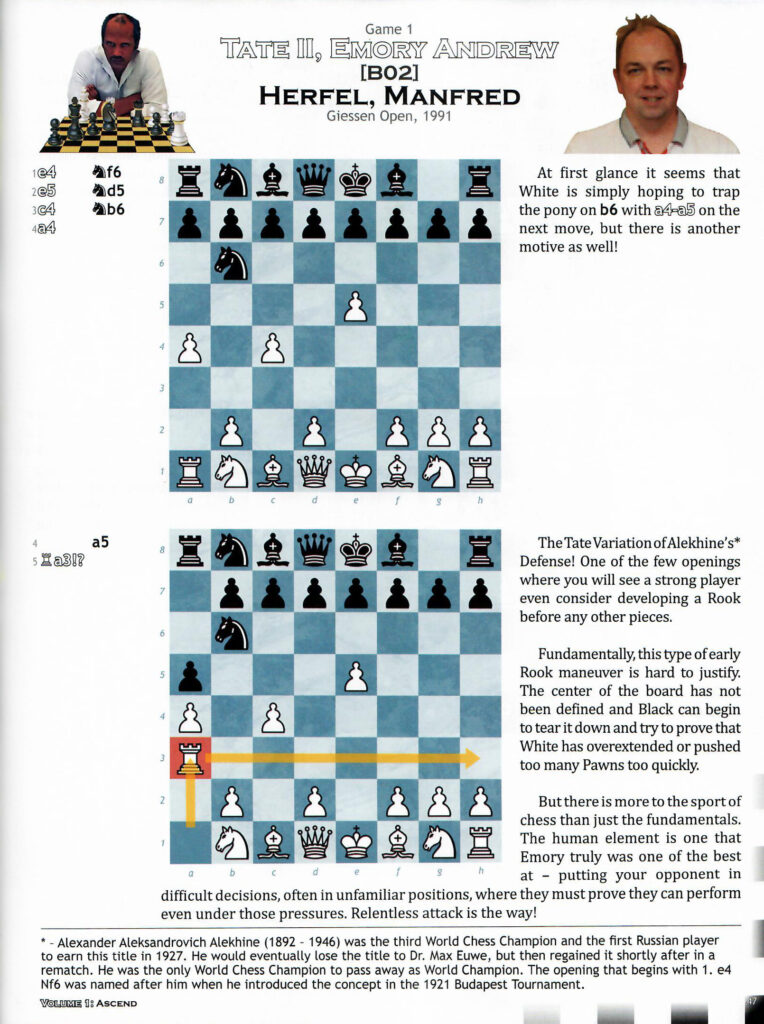“The Final Attack,” Chess Teachings of Emory Tate

FM Todd Andrews recently released a manual, The Final Attack a tribute to the lessons of International Master Emory Tate. Of course, Tate passed away in 2015, but his lessons live on. Andrews was a Tate protege and traveled with him to many tournaments soaking up pearls of wisdom. The life lessons left an impression on Andrews and a couple of years ago, he set out to put them into a set of volumes. The legacy continues.

FM Todd Andrews, co-author of The Final Attack series
with a copy of Triple Exclam!!!
This handsome, full-color manual has a very bold and sleek look with Andrew and Tristan Tate illustrated on the cover with the luminous presence of their father. The pages are of high print quality and some of the artistic themes give the book a nice gallant touch. The manual comes in paperback with more than 400 diagrams, 60 annotated games, and finally 28 sizzling tactical positions. A number of the positions included games featured were played on the Internet so they may not have been seen before.
Front & Back


The most important aspect of the manual is the themes that are prevalent in Tate’s attacking games. Concepts like the pawn lever to open lines, battering rams, sacrificial themes, and of course his famous rook lifts. Tate was an opportunistic player always looking for a chance to surprise the opponent like a predator creeping slowly in the tall grass to pounce on its prey. Some of the games are also featured in Triple Exclam including the famous Tate-Yudasin game. This game contains a treasure trove of lessons and still holds up as one of the most instructive attacking games ever played (pp. 126-130).


There is considerable attention given to the variation Tate created in the Alekhine’s Defense after 1.e4 Nf6 2.e5 Nd5 3.c4 Nb6 4.a4 a5 5.Ra3!? This was a variation that Tate first essayed in 1988 at the Air Force Championship against Waldowski ending in a 16-move draw. Tate would score some spectacular wins with this line including the game below against Manfred Herfel (pp. 46-52). This variation would develop a large following and would become a tremendous weapon, particularly in online blitz games.


This work had been a couple of years in the making and with great anticipation it was launched last week to the provocative video. Obviously endorsed by social media stars Andrew and Tristan Tate, the manual contains a number of philosophic quotes, some by Emory Jr. and others by Andrew (Emory III). Indeed, Emory’s sons have certainly created a stir in the social media landscape, but one would expect no other outcome given the influence the elder Tate had on his sons.
~International Master Emory Tate
This manual is certain to get some buzz on social media. With a $77.77 price tag, it will discourage the average individual, but of course, it is not billed as a “chess book.” It is presented as a training manual on how to recognize attacking patterns in chess warfare. In the same vein, Tate used to cherish his copy of Art of Attack by Vladimir Vukovic. Andrews states that the lessons delivered in this manual are through the very words of Emory Tate. In fact, Andrews even credits Tate as the “lead author.”
What is absolutely clear is that Tate was masterful in his ability to conduct an attack. This book presents them well. When I urged Emory to write a book with a collection of annotated games, he balked at the idea. With the exception of his legendary post-mortems, he was skittish about putting his ideas on display. He guarded his scoresheets as well-kept secrets. Sometimes he would even destroy them as one would see a sage do in a movie. Now after his ascension to the spiritual realm, these lessons have been codified and revealed in a way that they live on for an eternity.
Chess is somewhat underrated. A cerebral exercise, for certain,yet the war strategy aspect is often overlooked. War is everywhere. Believe
— emory tate (@tateterrific) December 12, 2011
